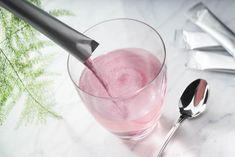
Ocean Spray is predicting strong growth for cranberry-based products in Europe, particularly in France.
This follows the approval of health claims for cranberry by the French government's food safety authority, AFSSA (Agence française de sécurité sanitaire des aliments).
In a ruling issued, AFSSA has confirmed that the powder and juice of North American cranberries vaccinium macrocarpon (VM) assists in reducing the adhesion of certain E. coli bacteria to the urinary tract walls. Food, beverage and dietary supplement manufacturers can now use the claim in the labelling and marketing of products containing Ocean Spray's cranberry juice concentrate and powder.
End products will need to contain certain quantities of concentrate or powder from North American VM cranberries, as this is the only cranberry species permissible to carry the officially approved health claim.
The North American VM cranberry is naturally rich in phenols and antioxidants. The approved limits will ensure that sufficient amounts of proanthocyanidins (type A) - the components responsible for the cranberry's anti-adhesion mechanism - are being made available to the consumer. Unable to stick and cause infection, disease-causing organisms are harmlessly flushed from the body.
Dr Joe Speroni, director of research at Ocean Spray, says: "The cranberry has long been linked with a healthy urinary tract. But it was not until the 1990s that support for an anti-adhesion mechanism really began. We've since built up a substantial catalogue of evidence, so we're delighted it has now been award official recognition by AFSSA.
"This represents a major breakthrough for Ocean Spray and we're looking forward to working with manufacturers to bring products bearing the claim to the marketplace."
Ocean Spray Ingredient Technology Group (ITG) produces 50 Brix cranberry concentrate from the filtered juice of mature North American cranberries. It also blends well with other fruit flavours, providing a distinctive tart taste and colour to applications such as drinking yoghurt and soft drinks.
The company's juice powder is pink in colour and contains approximately 90 per cent cranberry solids. Manufacturers looking for ingredients with enriched, standardised phytonutrient content can take advantage of the powder in nutraceutical, confectionery, dry mix beverage and other low moisture applications.
RESEWARCH PROGRAMME ASSISTS CRANBERRY EFFORT
A comprehensive body of scientific research backing the cranberry's role in urinary tract health formed the basis of Ocean Spray's application to AFSSA.
The research began in 1991 and has hit many milestones.
In 1991, a study published in the New England Journal of Medicine identified a component in cranberries and blueberries which prevented the adhesion of certain E. coli bacteria.
In a study published in 1994, in the Journal of the American Medical Association, Harvard Medical School researchers conducted the first large scale clinical trial to demonstrate that drinking cranberry juice regularly significantly reduced the presence of bacteria in the urine of elderly women. Researchers found that the effect was not because of a more acidic urine and speculated there was something specific in the cranberry that prevented bacteria from adhering to the urinary tract.
In 1998, a study published in the New England Journal of Medicine identified proanthocyanidins as the compounds in cranberries responsible for preventing E. Coli from adhering to the urinary tract.
In 2002, a clinical research published in The Canadian Journal of Urology, with a group of 150 women conducted by a University of British Columbia urologist, found that use of cranberry juice and cranberry tablets were effective in reducing recurrence of urinary tract infections (UTIs). Forty per cent fewer women experienced UTIs when receiving cranberry products versus placebo, and on average had half the number of UTIs.
In 2004, a research review published in Cochrane Database Systematic Reviews, concluded that there is evidence that cranberry juice may decrease the number of symptomatic UTIs in women.